Corsets and ponchos appeared among the Dinka peoples of South Sudan in the late 19th century with the arrival of Turkish slavers from Cairo. These used glass beads made in the Czech Republic for the slave trade with the Bari tribe, who lived on the banks of the White Nile. These began to be appreciated among the Dinka people, who controlled the economy north of Juba.
Beads were incorporated into Dinka aesthetics in the form of necklaces and belts, which over time evolved into ponchos and corsets. The Mundari imitated their Dinka neighbors and adopted these pieces around 1930. The Islamist government of Sudan prohibited the use of corsets by applying Sharia (Law Based on the Koran) from 1984.
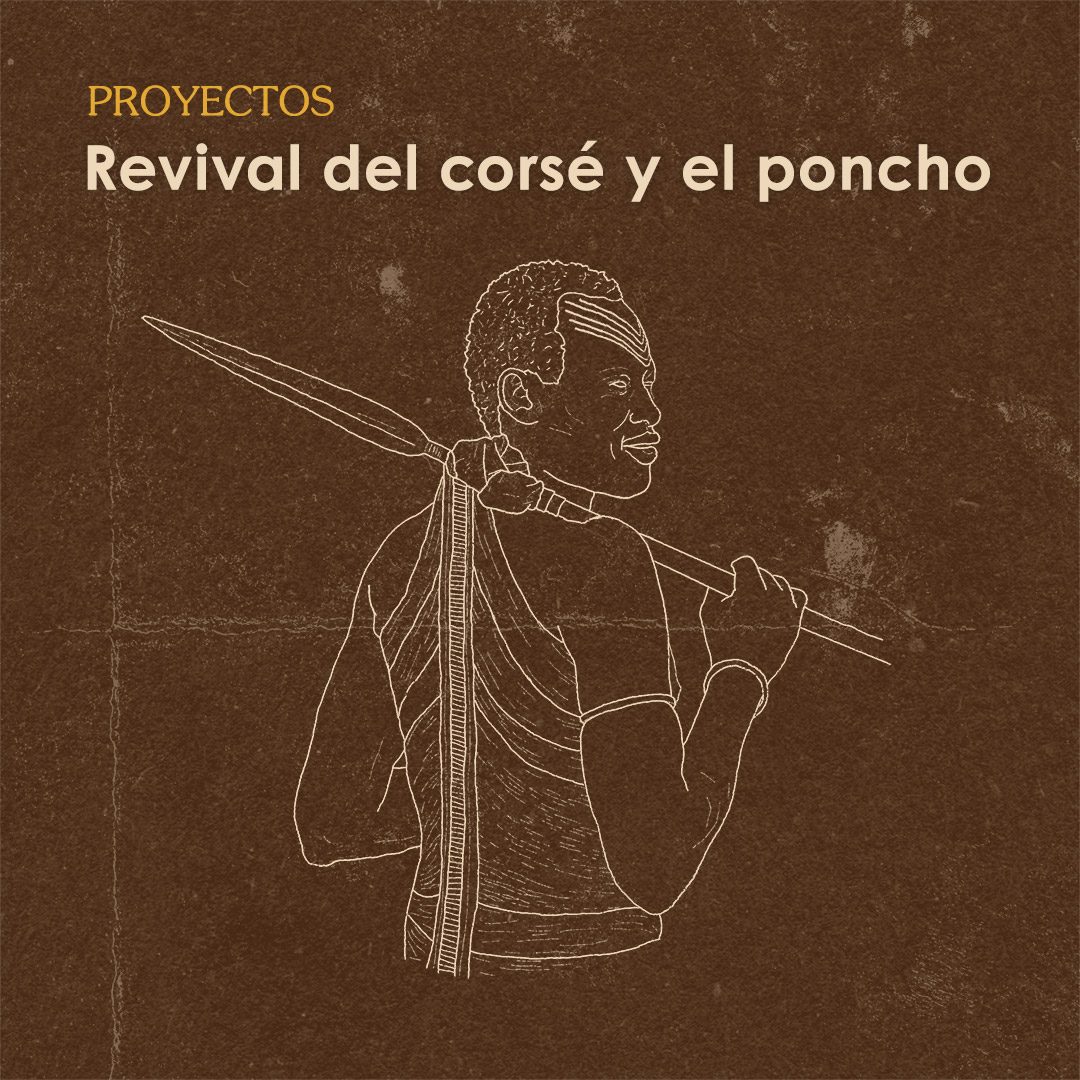
In 2017, during a Last Places expedition to South Sudan led by anthropologist Joan Riera, he met 3 Dinka women who, in their youth, had not only worn ponchos, but still knew how to make them, as well as corsets. Talking with them we understood that these clothes are still part of the collective imagination and we decided to start a revival project to recover the corsets and ponchos.
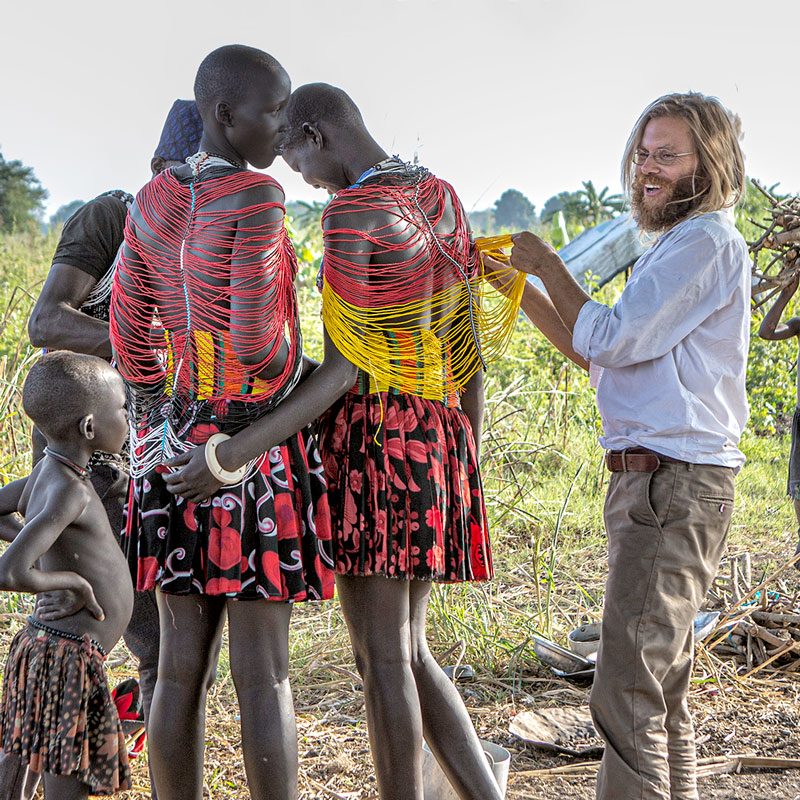
Joan Riera helping a young mundari put on a poncho
We gradually introduced ponchos and corsets in various communities with which we work on cultural tourism and sustainable development projects. The reception among the young people was positive. Both Mundaris and Dinka showed an interest in an aesthetic typical of their grandparents' generation. They agreed to value it and use it on special occasions. The poncho seemed to be better accepted due to its “erotic” connotations, according to what some young men told us.
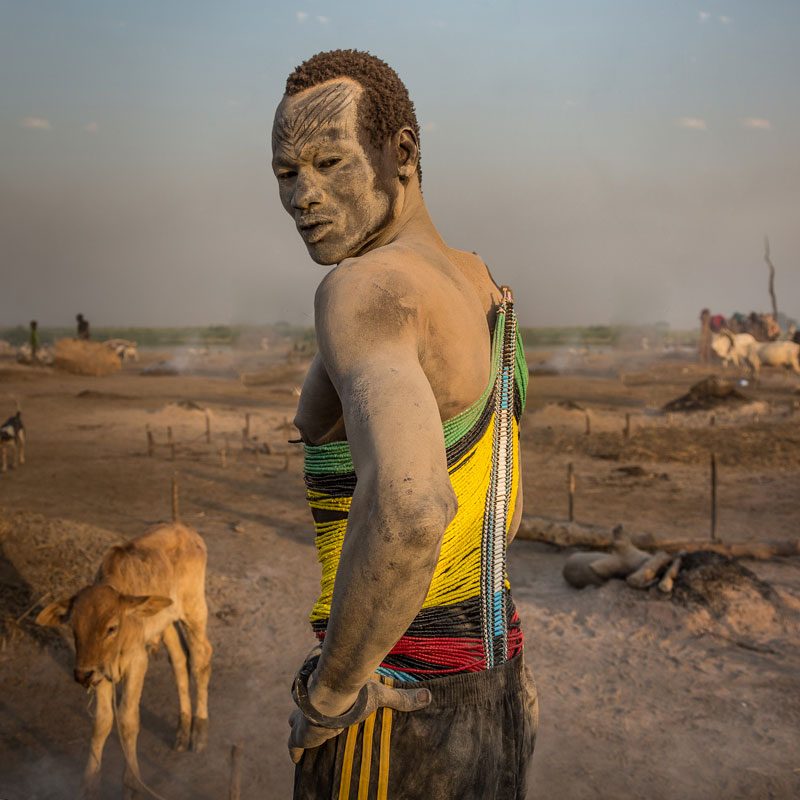
Mundari man with corset
Corsets and ponchos indicate age group, social status, and marital status. The complexity and beauty of the designs, the length, as well as the colors distinguish these messages. They can be used in everyday life, although they are usually reserved for special occasions such as weddings, parties and, in particular, dance ceremonies.
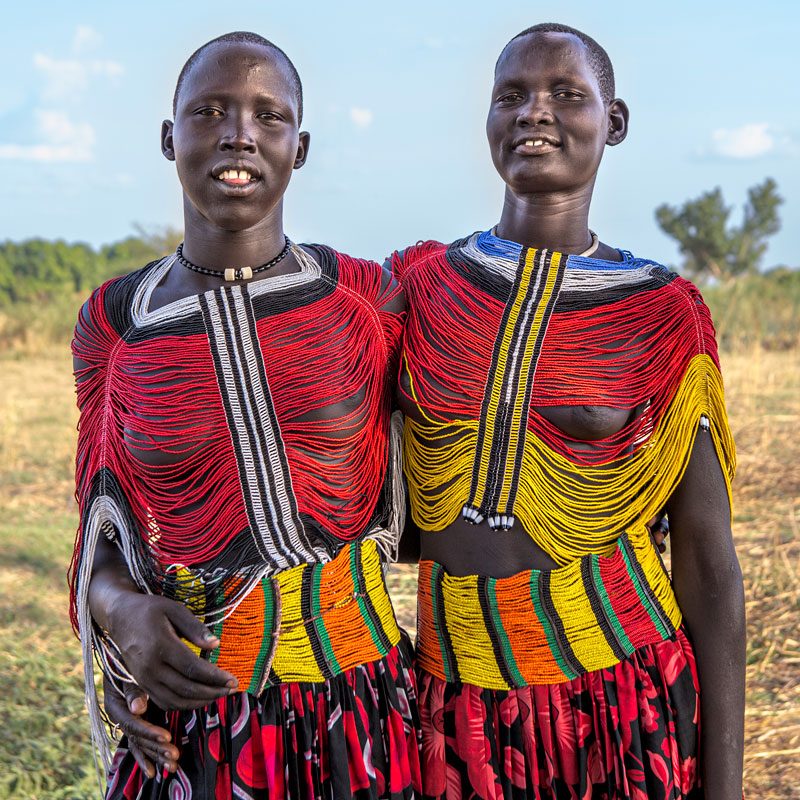
Mundari women wearing new ponchos
Corsets are usually worn by men and ponchos by women. The corset is easily recognized by its horn on the back. Cowrie shells (gak) are sewn onto the front and back of poncho, probably to protect the wearer and ensure her fertility.
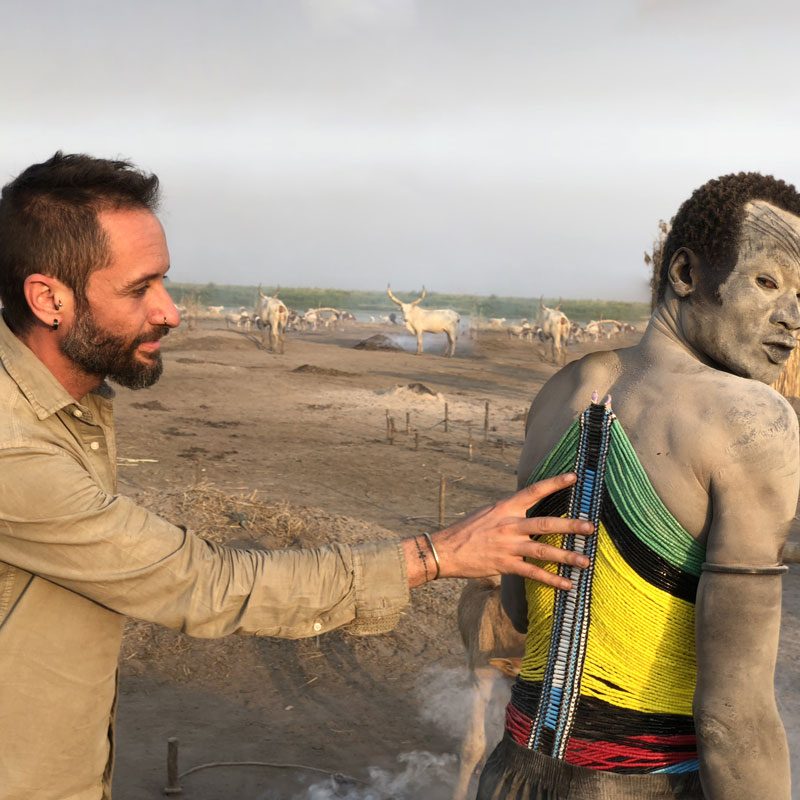
Aníbal Bueno helping a mundari man put on his corset
Currently, with the support of local leaders, we are again manufacturing corsets and ponchos with the help of artisan grandmothers, who still remember the manufacturing technique of these pieces of ornamental and symbolic clothing.
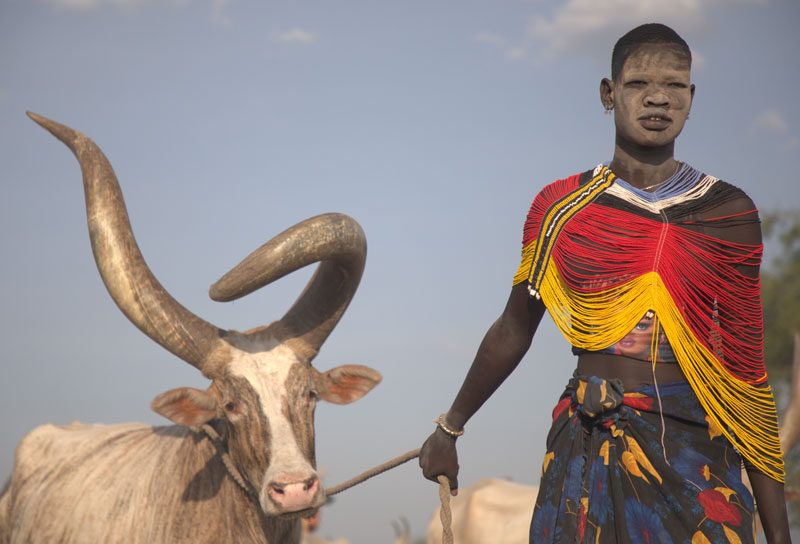
Mundari girl doing her chores
Do you want to meet the Mundari?
Discover their fascinating world on our trips to South Sudan. Click here to discover our scheduled trips to South Sudan.
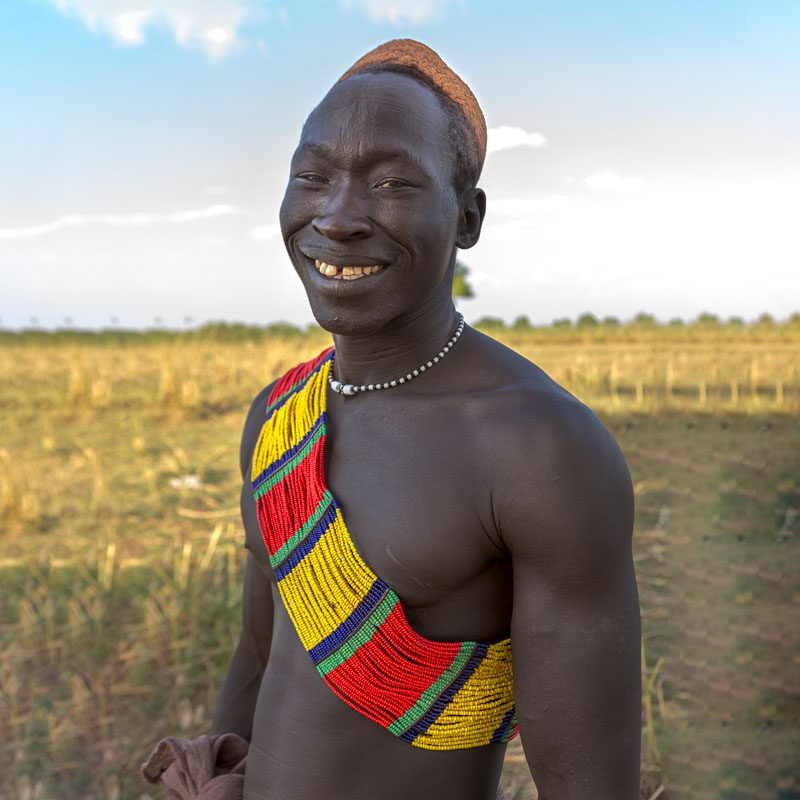
Young mundari with beaded ribbon
